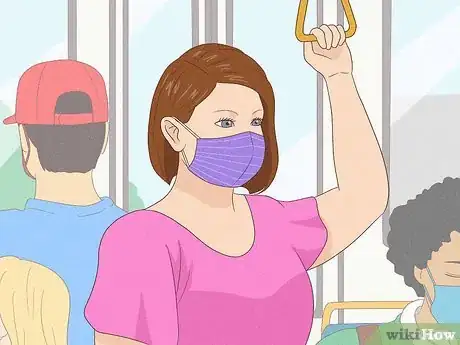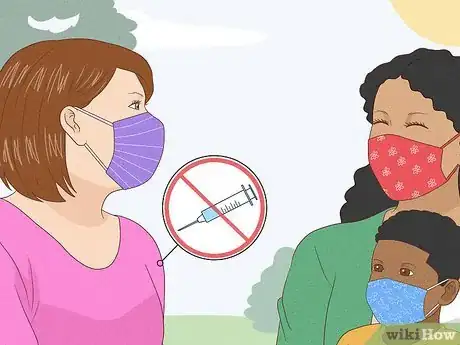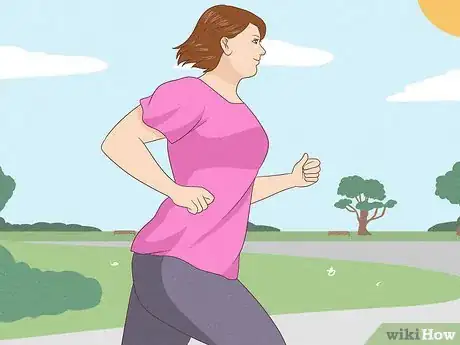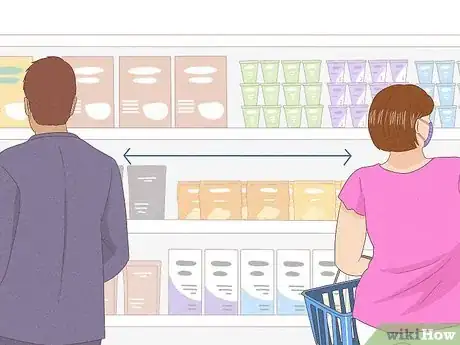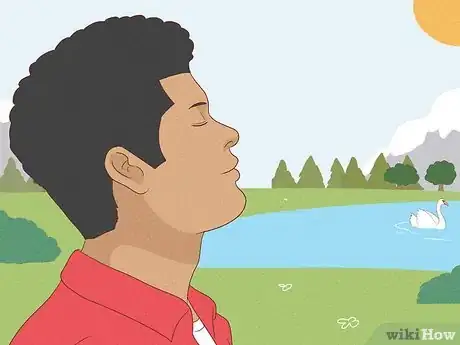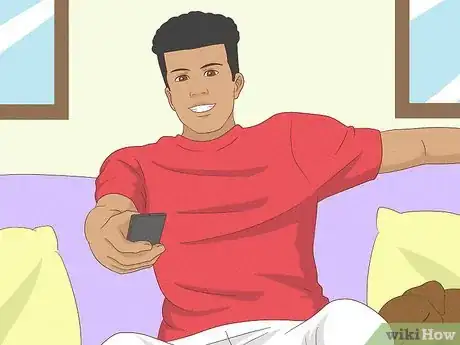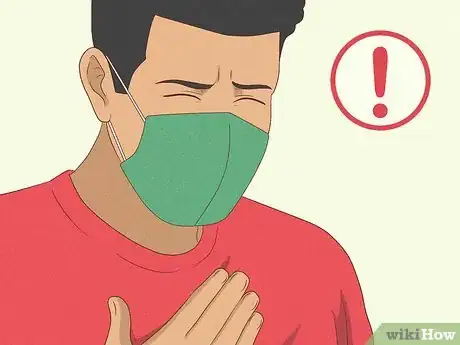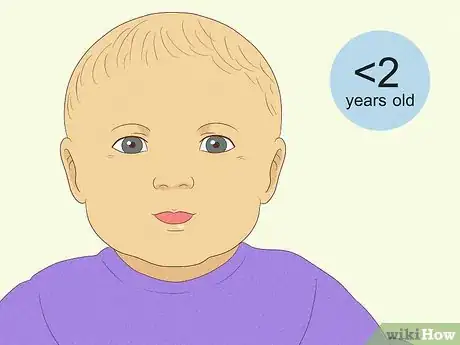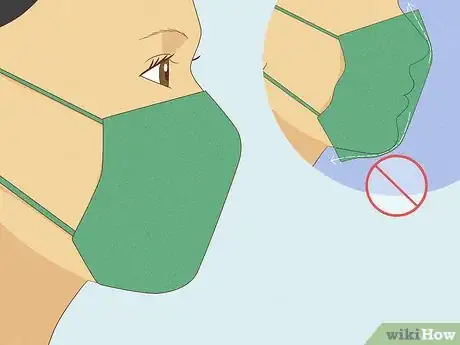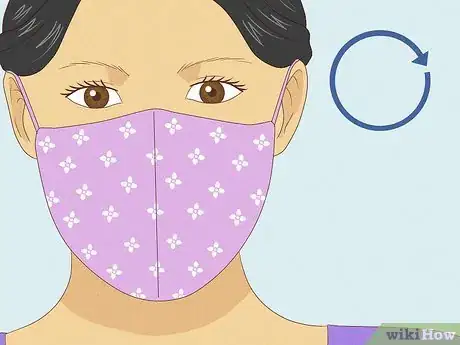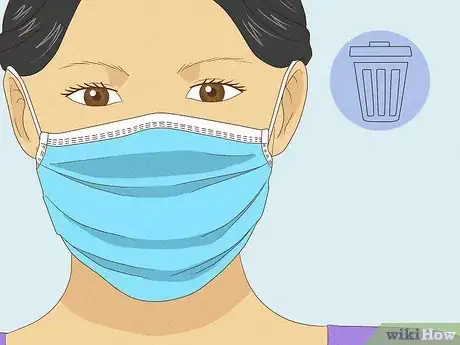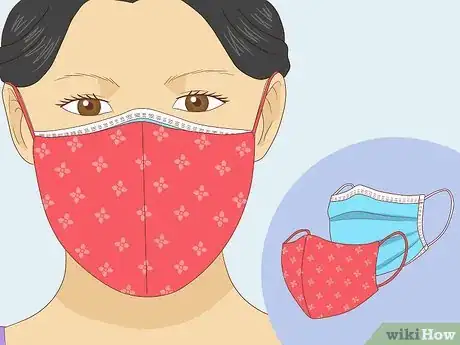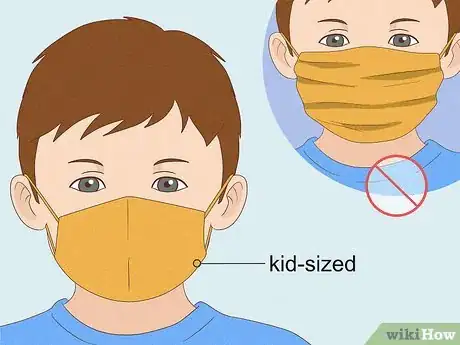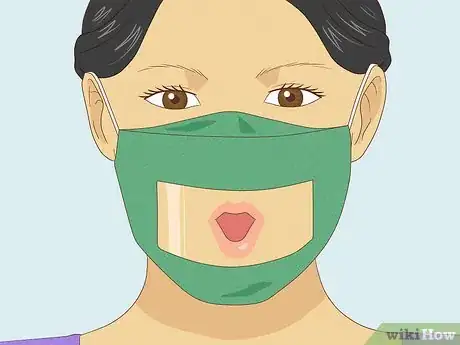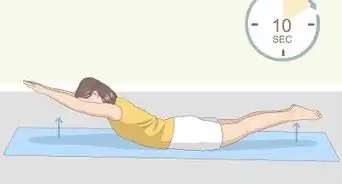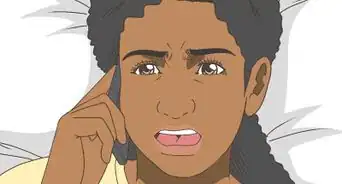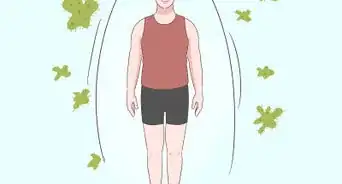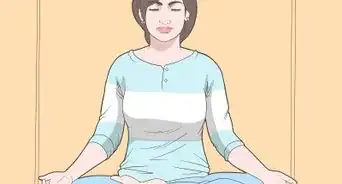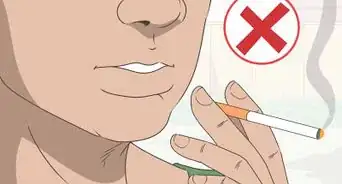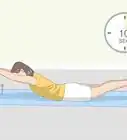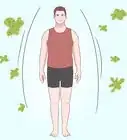This article was co-authored by Ni-Cheng Liang, MD and by wikiHow staff writer, Sophia Latorre. Dr. Ni-Cheng Liang is a board certified Pulmonologist and the Director of Pulmonary Integrative Medicine at Coastal Pulmonary Associates affiliated with the Scripps Health Network in San Diego, California. She also serves as a Voluntary Assistant Professor of Medicine at the University of California San Diego School of Medicine while volunteering for the UCSD Medical Student-Run Free Clinic for uninsured patients. With over 15 years of experience, Dr. Liang specializes in pulmonary and respiratory medical concerns, mindfulness teaching, physician wellness, and integrative medicine. Dr. Liang received her Doctor of Medicine (MD) from the University of Maryland School of Medicine. Dr. Liang was voted as a San Diego Top Doctor in 2017 and 2019. She was also awarded the 2019 American Lung Association San Diego Lung Health Provider of the Year.
There are 13 references cited in this article, which can be found at the bottom of the page.
This article has been viewed 52,732 times.
You’re probably doing everything you can to prevent the spread of COVID-19, but you may have encountered conflicting information about face masks and when to wear them. The Center for Disease Control and Prevention (CDC) recommends wearing a mask if you're unvaccinated to prevent the spread of COVID-19 in the USA, the virus can spread before you know you have it, and a mask works by catching your respiratory droplets when you breathe, talk, or cough. While you need to wear your mask in public, it isn't necessary to wear it all the time. Wearing a mask in public places may be mandated by your city, county, state, province, territory, or country, and many businesses are requiring customers to wear masks to enter their premises.[1]
Steps
When to Wear a Mask
-
1Wear a mask when indoors in public.[2] Your mask protects others in case you’re sick and may provide you with a little protection, as well. The CDC recommends that everyone over the age of 2 wear a mask in crowded indoor places to help stop the spread of COVID-19. As of July 2021, this recommendation also applies to people that have been vaccinated and are in high transmission areas, due to the Delta variant.[3]
- It’s extremely important to put a mask on before you go somewhere that tends to get crowded, like the grocery store, pharmacy, department store, transit bus, school, gym, school bus, or place of worship. It’s hard to social distance in these types of places, so it’s easier for the virus to spread.
- Federal law requires that everyone onboard planes, trains, cruise ships, buses, taxis, and ride-sharing services to wear masks. Don't close the window if it has been opened; the window allows for fresh air to enter the train, bus, or taxi and for COVID-19 to dilute in the environment.
- When in doubt, it’s best to mask up.
-
2Put on a mask before spending time with others if you're not vaccinated. It’s really hard to figure out whether or not you need a mask around family or friends. You might be tempted to skip your mask when you're with people you care about, but that’s a bad idea. If you haven't been vaccinated, wear a mask anytime you’re around someone who’s not a part of your household.[4]
- This includes small family gatherings, visits with friends, and play dates with your children’s friends.
- As of July 2021, the CDC still recommends following social distancing guidelines if you're unvaccinated, even in small gatherings. If you decide to meet up with friends or family, try to do it outside, keep distance between yourselves—the U.S. recommends a distance of at least 6 ft (1.8 m)—and wear your masks.[5]
Advertisement -
3Use a mask at home if you have COVID-19. In most cases, you don’t need to worry about wearing a mask while you’re at home. However, start wearing a mask at home to protect your family or roommates if you develop any symptoms of COVID-19. Keep wearing your mask until a healthcare provider confirms that you don’t have the virus.[6]
- Stay at home except to get medical care if you may have COVID-19. Symptoms of COVID-19 include cough, fever, chills, shortness of breath or trouble breathing, headache, the new loss of taste or smell, fatigue, blueish lips and/ or face, body aches, sore throat, congestion, runny nose, nausea, vomiting, and diarrhea.[7]
- You may also wear a mask if someone in your house has a confirmed case of COVID-19. However, keep in mind that your mask may not offer any protection. Do your best to stay in a separate room from your ill housemate while they’re recovering. Additionally, wash your hands often and sanitize high-touch surfaces daily.[8]
-
4Remind your child to wear a mask when they can't social distance. While some kids are fine with wearing a mask, you might find yourself in a constant battle to get your children to keep theirs on. This can be super frustrating, especially since you want your kids to stay healthy. As a compromise, the CDC recommends only telling your child to wear a mask when they’re in close quarters with people who don’t live with them.[9]
- You might say, “It’s okay for you to take off your mask until we get to the bus stop, but then I need you to put it back on.”
- For instance, you might ask them to wear their mask in places like the bus stop, the school bus, the hallway at school, and the grocery store.
-
5Wear a mask at work if it's required. Your employer will provide guidance about when, where and how you need to wear a mask. Your place of work may advise you don't need to wear a mask when you're alone in your office alone or other confined location.
- Depending on the number of cases in your area and whether you are at higher risk yourself, consider wearing a mask even if your employer does not require it.
-
6Exercise outside or at home if you can’t wear a mask while doing it. You might find it hard to breathe during your workout if you’re wearing a mask. Don’t keep your mask on if you’re having trouble breathing. However, consider going outdoors for your workout or doing it at home if you're not vaccinated. This way, you won’t have to worry about the spread of COVID-19.[10]
- If you’re a walker or runner, you might get your exercise outdoors.
- If you enjoy group classes at your gym, try doing a video aerobic, dance, or kickboxing workout at home instead.
- You may still be able to wear your mask during weight lifting sessions. If not, try lifting weights at home or doing bodyweight exercises.
-
7Follow social distancing guidelines while wearing a mask, if possible.[11] While masks help prevent the spread of COVID-19, they’re not 100% effective. You still need to keep a distance of at least 6 feet between yourself and others who don’t live in your household if you haven't been vaccinated.[12]
- Sometimes it’s not possible to distance while you’re in busy places, like the grocery store. Similarly, you might not be able to social distance while on a transit bus or while using a rideshare. Just do your best!
Going Mask-Free Safely
-
1Feel free to take off your mask outside. As of July 2021, the CDC states that you don't need to wear a mask in outdoor settings, regardless of your vaccination status.[13] That means you can feel free to enjoy a nice outdoor workout or spend time with your family or housemates outdoors mask-free.
- Carry your mask with you just in case you need it.
- Consider wearing a mask outdoors in very crowded conditions or where you expect to be encountering people who have not been fully vaccinated.[14]
-
2Leave your mask off while at home if you’re not sick. You’re probably seeing reminders to wear a mask everywhere, so it may feel like you need to keep one on at all times. However, you really only need your mask if you’re going to be in public or around people who don’t live with you. Don’t worry about wearing a mask at home unless you may have COVID-19 or test positive.[15]
- Remember to put your mask on if someone who doesn't live with you comes over, whether it's a guest or a repair person.[16]
-
3Take off your mask while you’re swimming or in water. If your mask gets wet, it’ll be very hard for you to breathe through it. Since it’s really hard to keep your mask dry if you’re in the water, the CDC says to take off your mask until you’re back on dry land. However, be very diligent about social distancing while in the water, and consider staying dry if the area is crowded so you can wear your mask.[17]
- For example, you might wear your mask on the beach but take it off while you’re in the water.
-
4Don’t wear a mask if you’re struggling to breathe. If you’re having trouble breathing, it's likely not safe for you to wear a mask.[18] If you must go out, check with your doctor first. Ask them how you can safely go out without wearing your mask.
-
5Don’t put a mask on a child under 2 years of age or someone who is unable to remove it. While masks are really important for stopping the spread of COVID-19, they’re not right for everyone. Babies and toddlers may not be able to wear a mask safely and cannot tell you if they’re having trouble breathing. Similarly, don’t put a mask on someone unconscious or unable to physically remove the mask.[19]
- For example, don’t put a mask on a family member who receives in-home care unless you know for sure they can pull it off if they’re having trouble breathing.
Choosing the Right Mask
-
1Pick a mask that fits snugly and covers your nose and mouth. Your mask should filter the air you breathe in and the air you breathe out. If there are gaps between your mask and your skin, you can feel air escaping from your mask, or your glasses fog up while you're wearing the mask, it doesn't fit properly. Select a mask that fully covers your mouth, nose, and chin and fits tightly.[20]
-
2Use a fabric mask if you want a reusable mask. You can use a store-bought mask or make your own. Choose a mask that has at least 3 layers of fabric for the best protection.[21]
- Warning: Since the highly-contagious Omicron variant became the dominant strain of the virus globally, cloth masks are no longer effective at preventing transmission. Use a surgical or n-95 mask instead.[22]
- If you don’t have a mask, it’s okay to use a bandana or scarf as long as it covers your nose and mouth. However, keep in mind that these face coverings won't provide as much protection as a mask.
- Wash your mask in a washing machine after every use.[23]
-
3Wear disposable masks if you don’t want to wash them. You might feel nervous about washing and reusing masks, and that’s okay. You can find disposable masks at local department stores, grocery stores, hardware stores, and online. Try these masks if you're worried you’ll forget to wash a fabric mask.[24]
- Don’t reuse your disposable masks when possible. Always throw them away after each use.
-
4Double mask for a better fit and more protection. The CDC now recommends double masking, where you wear a cloth mask over a disposable mask in order to improve the fit of the masks on your face, which can improve protection.[25]
- If double masking feels very uncomfortable for you or it does not seem like it is improving the fit, you may want to just wear a single mask instead.
-
5Get child-sized masks for any children in your care. Children typically have smaller faces than adults, so an adult mask won’t fit them properly. A mask that is too big won’t offer good protection and may be really uncomfortable for the child. Fortunately, you can buy smaller masks that are made for kids. Check the label on the masks you purchase to make sure they’re kid-sized.[26]
- It’s okay to let your child wear an adult mask if the child-sized mask feels too snug for your child or doesn’t cover their nose and mouth.
- Try getting fun prints so your child is more excited about wearing their masks.
-
6Use a clear mask if you interact with someone who's deaf or hard of hearing. People who have trouble hearing often like to read lips, and masks prevent that from happening. Wearing a typical mask may not work for you if someone in your life reads lips to understand you. Instead, get a mask that is clear so the person can still see your lips.[27]
- You can find clear masks online. Some of these masks have fabric along the outside of the mask with a clear window in the middle so your lips are visible.
-
7Skip masks with valves or vents, especially if you have COVID-19. You may come across some cloth masks and N95 masks that have a valve or vent to allow air to escape. Although these masks may be comfortable, they don’t protect against the spread of COVID-19 because respiratory droplets that contain the virus can flow through the vents. Make sure the masks you use consist of solid fabric.[28]
- For example, you may find masks at the hardware store that have a vent to allow airflow. N95 masks made for industrial settings aren't the same as medical-grade N95 masks.[29] Save these masks for home improvement projects.
Expert Q&A
Did you know you can get expert answers for this article?
Unlock expert answers by supporting wikiHow
-
QuestionWhat's the correct way to wear a mask?
 Ni-Cheng Liang, MDDr. Ni-Cheng Liang is a board certified Pulmonologist and the Director of Pulmonary Integrative Medicine at Coastal Pulmonary Associates affiliated with the Scripps Health Network in San Diego, California. She also serves as a Voluntary Assistant Professor of Medicine at the University of California San Diego School of Medicine while volunteering for the UCSD Medical Student-Run Free Clinic for uninsured patients. With over 15 years of experience, Dr. Liang specializes in pulmonary and respiratory medical concerns, mindfulness teaching, physician wellness, and integrative medicine. Dr. Liang received her Doctor of Medicine (MD) from the University of Maryland School of Medicine. Dr. Liang was voted as a San Diego Top Doctor in 2017 and 2019. She was also awarded the 2019 American Lung Association San Diego Lung Health Provider of the Year.
Ni-Cheng Liang, MDDr. Ni-Cheng Liang is a board certified Pulmonologist and the Director of Pulmonary Integrative Medicine at Coastal Pulmonary Associates affiliated with the Scripps Health Network in San Diego, California. She also serves as a Voluntary Assistant Professor of Medicine at the University of California San Diego School of Medicine while volunteering for the UCSD Medical Student-Run Free Clinic for uninsured patients. With over 15 years of experience, Dr. Liang specializes in pulmonary and respiratory medical concerns, mindfulness teaching, physician wellness, and integrative medicine. Dr. Liang received her Doctor of Medicine (MD) from the University of Maryland School of Medicine. Dr. Liang was voted as a San Diego Top Doctor in 2017 and 2019. She was also awarded the 2019 American Lung Association San Diego Lung Health Provider of the Year.
Board Certified Pulmonologist First you should wash your hands before putting the mask on. Then, open up the mask so you're holding it on the outside—you want to keep the inside part of the mask that's going to touch your face as clean as possible. Then, put one ear loop on followed by the other. If there's a nose bridge adjuster, make sure you take your hands and depress the bendable piece of metal on either side of the bridge of your nose to ensure it fits snugly. You also want to make sure that the fabric stretches beyond the bottom part of your chin.
First you should wash your hands before putting the mask on. Then, open up the mask so you're holding it on the outside—you want to keep the inside part of the mask that's going to touch your face as clean as possible. Then, put one ear loop on followed by the other. If there's a nose bridge adjuster, make sure you take your hands and depress the bendable piece of metal on either side of the bridge of your nose to ensure it fits snugly. You also want to make sure that the fabric stretches beyond the bottom part of your chin.
Warnings
- Don't pretend to have a medical condition to skip wearing a mask. If you really have a health condition, you should definitely be at home at all times.⧼thumbs_response⧽
- Refusal to comply with a government-issued face mask mandate may result in a fine or other legal penalties.⧼thumbs_response⧽
- Don't cut a hole in your mask for your mouth. It entirely defeats the purpose of wearing one. Plus, it is incredibly inconsiderate.⧼thumbs_response⧽
- Never put a mask on a child under two years of age or someone who can’t remove it.[32]⧼thumbs_response⧽
- Be careful not to touch your mask while you’re wearing it, as you may accidentally spread germs to your face.[33]⧼thumbs_response⧽
- Don’t share a mask with someone else because you may come into contact with their germs.[34]⧼thumbs_response⧽
- Don’t use masks with a vent or filter.[35]⧼thumbs_response⧽
References
- ↑ https://www.cdc.gov/coronavirus/2019-ncov/prevent-getting-sick/about-face-coverings.html
- ↑ Ni-Cheng Liang, MD. Board Certified Pulmonologist. Expert Interview. 23 October 2020.
- ↑ https://www.cdc.gov/coronavirus/2019-ncov/prevent-getting-sick/about-face-coverings.html
- ↑ https://www.cdc.gov/coronavirus/2019-ncov/prevent-getting-sick/how-to-wear-cloth-face-coverings.html
- ↑ https://www.cdc.gov/coronavirus/2019-ncov/prevent-getting-sick/prevention.html
- ↑ https://www.cdc.gov/coronavirus/2019-ncov/prevent-getting-sick/cloth-face-cover-guidance.html
- ↑ https://www.cdc.gov/coronavirus/2019-ncov/symptoms-testing/symptoms.html
- ↑ https://www.cdc.gov/coronavirus/2019-ncov/prevent-getting-sick/cloth-face-cover-guidance.html
- ↑ https://www.cdc.gov/coronavirus/2019-ncov/prevent-getting-sick/cloth-face-cover-guidance.html
- ↑ https://www.cdc.gov/coronavirus/2019-ncov/daily-life-coping/personal-social-activities.html
- ↑ Ni-Cheng Liang, MD. Board Certified Pulmonologist. Expert Interview. 23 October 2020.
- ↑ https://www.cdc.gov/coronavirus/2019-ncov/prevent-getting-sick/prevention.html
- ↑ https://www.cdc.gov/coronavirus/2019-ncov/prevent-getting-sick/prevention.html
- ↑ https://www.cdc.gov/coronavirus/2019-ncov/prevent-getting-sick/about-face-coverings.html
- ↑ https://health.clevelandclinic.org/should-you-wear-a-mask-at-home/
- ↑ https://www.cdc.gov/coronavirus/2019-ncov/prevent-getting-sick/cloth-face-cover-guidance.html
- ↑ https://www.cdc.gov/coronavirus/2019-ncov/prevent-getting-sick/cloth-face-cover-guidance.html
- ↑ https://health.clevelandclinic.org/should-you-wear-a-mask-at-home/
- ↑ https://www.cdc.gov/coronavirus/2019-ncov/prevent-getting-sick/how-to-wear-cloth-face-coverings.html
- ↑ https://www.cdc.gov/coronavirus/2019-ncov/prevent-getting-sick/types-of-masks.html
- ↑ https://www.cdc.gov/coronavirus/2019-ncov/prevent-getting-sick/types-of-masks.html
- ↑ https://health.clevelandclinic.org/are-cloth-masks-enough-against-omicron/
- ↑ https://www.cdc.gov/coronavirus/2019-ncov/prevent-getting-sick/about-face-coverings.html
- ↑ https://www.who.int/images/default-source/health-topics/coronavirus/masks-infographic---final-(web---rgb).png?sfvrsn=c67232f0_15
- ↑ https://www.cdc.gov/coronavirus/2019-ncov/prevent-getting-sick/types-of-masks.html
- ↑ https://www.cdc.gov/coronavirus/2019-ncov/prevent-getting-sick/cloth-face-cover-guidance.html
- ↑ https://www.cdc.gov/coronavirus/2019-ncov/prevent-getting-sick/cloth-face-cover-guidance.html
- ↑ https://www.cdc.gov/coronavirus/2019-ncov/prevent-getting-sick/cloth-face-cover-guidance.html
- ↑ https://www.fda.gov/medical-devices/personal-protective-equipment-infection-control/n95-respirators-surgical-masks-and-face-masks
- ↑ https://www.cdc.gov/coronavirus/2019-ncov/prevent-getting-sick/how-to-wear-cloth-face-coverings.html
- ↑ https://www.hopkinsmedicine.org/health/conditions-and-diseases/coronavirus/proper-mask-wearing-coronavirus-prevention-infographic
- ↑ https://www.cdc.gov/coronavirus/2019-ncov/prevent-getting-sick/cloth-face-cover-guidance.html
- ↑ https://www.hopkinsmedicine.org/health/conditions-and-diseases/coronavirus/proper-mask-wearing-coronavirus-prevention-infographic
- ↑ https://www.hopkinsmedicine.org/health/conditions-and-diseases/coronavirus/proper-mask-wearing-coronavirus-prevention-infographic
- ↑ https://www.cdc.gov/coronavirus/2019-ncov/prevent-getting-sick/cloth-face-cover-guidance.html
